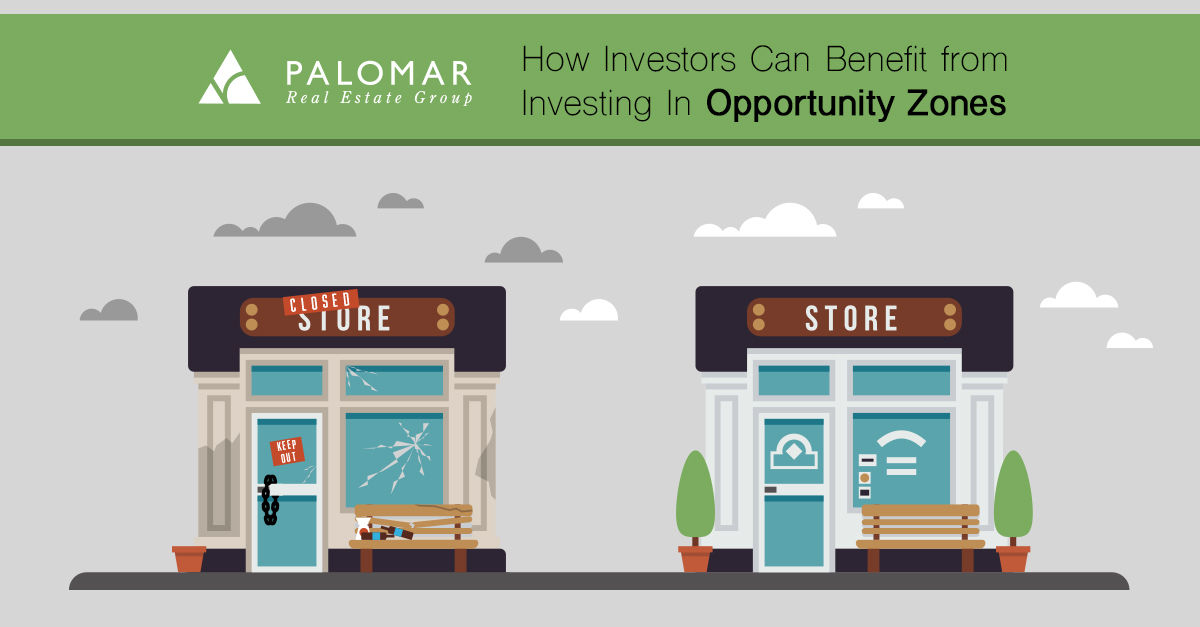
Opportunity Zones: How Investors Can Benefit From Investing In Them
October 29, 2018 | New Fire
OCTOBER 29, 2018 | THE PALOMAR GROUP
The Opportunity Zone program was included in the federal Tax Cuts and Jobs Act in December of 2017. New investments in Opportunity Zones will be eligible for preferential tax treatment. The new provision is designed to stimulate investment in struggling and economically distressed communities across the United States. This summer, the Department of Treasury designated 8,760 zones that are considered Opportunity Zones. The hope is that these zones will build up struggling communities and the people in them, while giving investors a tax break to encourage development. The IRS has yet to issue final guidelines to investors on how the program will work, but here is what we know so far about investments in Opportunity Zones:
- Temporary gain deferral on any capital gain, which includes the sale of real estate, stocks and businesses, is eligible to exchange into an Opportunity Fund until you sell the property or December 2026
- Step-up basis for the capital gains invested
- Basis increased by 10% if the investor holds the property for more than 5 years
- Basis increased by 15% if the investor holds the property for more than 7 years
- Permanent exclusion from taxable income of capital gains from the sale of the Opportunity Zone property if it held for more than 10 years
- Investments in an Opportunity Zone must be made through an opportunity fund. An opportunity fund is a corporation or partnership organized to invest in “qualified opportunity-zone property” or QOZP. An opportunity fund must hold at least 90% of its assets in a QOZP
For example, James recognizes a $100,000 profit on the sale of a stock. If he invests that gain in an Opportunity Zone fund, he can postpone capital gains taxes until 2026. If he holds his investment for five years, his $100,000 deferred gain is reduced by 10%, to $90,000. After seven years, the deferred gain is reduced by 15%, to $85,000. If James holds the investment for 10 years, he may exclude any appreciation in the value of the Opportunity Zone Fund share. Therefore, if he held the investment for 10 years and sold his fund shares for $150,000, he could exclude tax from his entire $50,000 gain.
Investors are already setting aside money to invest in Opportunity Zones, and Costar is projecting that $85 billion to $250 billion will be invested in Opportunity Zones in 2019. With the large amount of money that could be invested in this program, there is some concern that the lack of rules and government oversight may lead to investors benefiting more from the Opportunity Zones than the distressed communities. Stay tuned as we learn more about the program over the next couple of months.